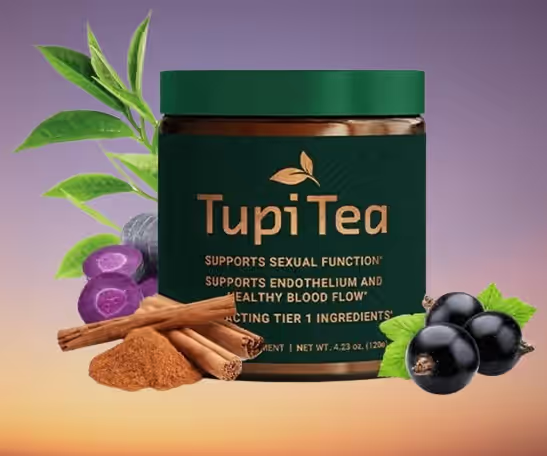Table of Contents
Ever wondered about the world of pu erh tea? It’s a pretty special kind of tea from China, known for its unique taste and how it changes over time. If you’re new to it, or just want to try something different, you’re in the right place. We’ve put together a list of some of the best pu erh tea blends out there that are definitely worth a try. Get ready to explore some really interesting flavors!
Key Takeaways
- Pu erh tea is a unique, fermented tea from China.
- There are many flavored pu erh blends that offer a different experience.
- Flavored pu erh can be a good way to get into this type of tea.
- Some blends combine traditional pu erh with popular flavors like Earl Grey or chai.
- These teas can be enjoyed hot or cold, depending on the blend.
1) Crimson Earl Grey Pu Erh

I recently stumbled upon Crimson Earl Grey Pu Erh, and it’s a fascinating mix. It takes the earthy taste of pu erh tea and blends it with the citrusy flavor of bergamot, like Earl Grey tea. The result? A complex, yet smooth drink that works any time of day.
It’s got a deep red color when you brew it, which is pretty cool. You get the strong taste of pu erh, but then the bright, floral taste of Earl Grey comes through. It’s a nice balance. If you’re into pu erh tea reviews, this one is worth checking out. It’s great if you want to try something new or just want a twist on your usual tea.
This tea also has the health benefits of pu erh, like helping with digestion and being full of antioxidants. It’s a tasty way to add something good to your daily routine.
When it comes to buying pu erh tea online, there are many pu erh tea brands to choose from. Finding the top pu erh tea brands can take some research, but it’s worth it to find a blend you love.
Here’s a quick rundown:
- Unique flavor combination
- Potential health benefits
- Appeals to both pu erh and Earl Grey fans
👉 Grab the Best-Rated Pu Erh Tea Blends Now 👈
2) Pineapple Coconut Pu Erh

I recently stumbled upon a really interesting tea: Pineapple Coconut Pu Erh. It’s like a vacation in a cup! This blend takes the earthy base of pu erh and infuses it with tropical flavors. The pineapple gives it a sweet and tangy kick, while the coconut adds a creamy, smooth finish. It’s a pretty cool combination that I didn’t expect to work so well.
I think this tea is especially good iced on a hot day. It’s super refreshing. But it’s also nice hot when you want something comforting but a little different. The fruit flavors don’t overpower the pu erh; you can still taste that distinctive earthy flavor, which is important. It just makes it more interesting.
If you’re new to pu erh and find the traditional taste a bit too strong, this could be a great way to ease in. It’s also a fun way for experienced tea drinkers to try something new. Plus, you still get the potential health benefits of pu erh, like its supposed aid to digestion.
I’ve been experimenting with different brewing times to get the perfect balance of flavors. I’ve also been wondering about the difference between raw vs ripe pu erh and how that affects the taste of this blend. Maybe I’ll try to find out more about that next time!
3) Honey Ginseng Pu Erh
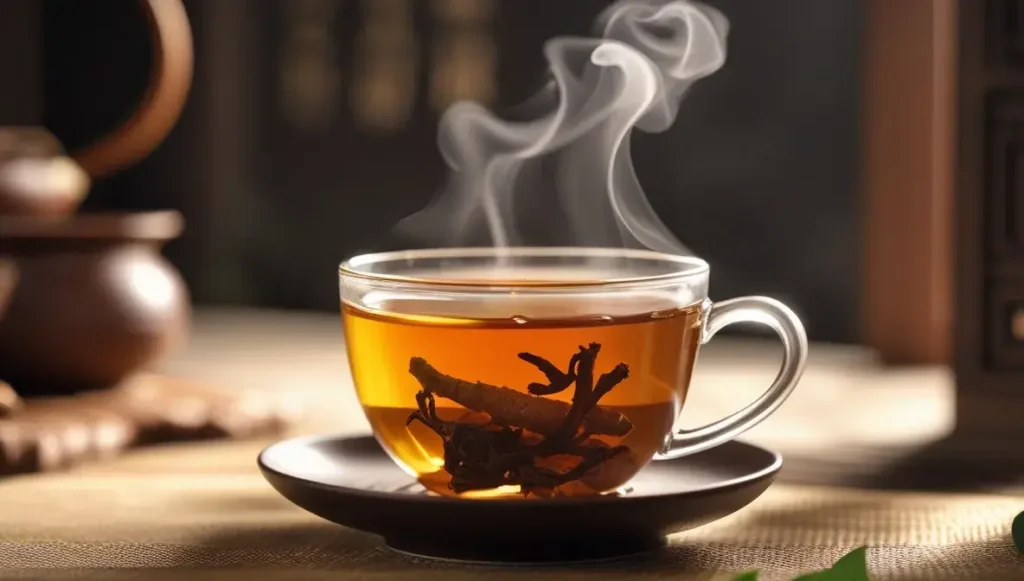
I’ve been really getting into Pu Erh teas lately, and this Honey Ginseng blend is something else. It’s a really interesting mix of sweet and earthy flavors that I didn’t expect to like as much as I do.
The honey gives it this natural sweetness that just works so well with the rich, deep taste of the aged Pu Erh. Then you get this subtle complexity from the ginseng, a little bit of bitterness that balances everything out. It’s not overpowering at all, just enough to keep things interesting. I’ve found myself reaching for this one in the afternoons when I need a little boost. It’s got caffeine from the Pu Erh, plus ginseng is supposed to be good for energy, so it’s a win-win.
Honestly, I wasn’t sure about this combo at first. Honey and ginseng with tea? Sounded a little weird. But it’s actually become one of my favorites. It’s smooth, full-bodied, and has these notes of caramel and herbs that are just so comforting. I’d recommend giving it a try if you’re looking for something a little different.
4) Rose Petal Pu Erh
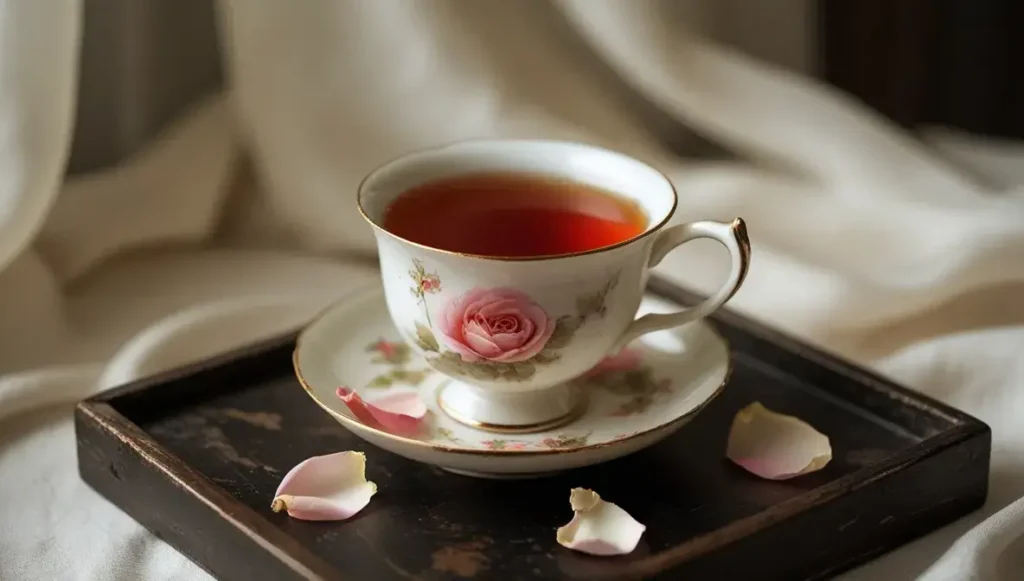
Rose Petal Pu Erh is a really interesting mix. It takes the earthy taste of pu erh and blends it with the sweet smell of rose petals. It’s a pretty cool combo if you’re looking for something a little different.
I think this tea is super relaxing. The rose scent makes the pu erh feel softer, which is nice after a long day. You can drink it hot or cold, too. Iced, it’s a great way to cool down in the summer. Some people think pu erh is too strong, but the rose petals make it more gentle without losing that pu erh flavor. It’s one of the finest pu erh selections if you want something floral.
I like to steep this tea a few times. Each time, you get a slightly different taste. The first steep is bold, but the next ones are more subtle. It’s fun to see how the flavor changes.
Here are a few reasons why I enjoy it:
- It smells amazing.
- It tastes good hot or cold.
- It’s a nice change from regular tea.
If you’re into aged pu erh recommendations, but want something a bit more delicate, give this one a try.
👉 Uncover Top Pu Erh Tea Flavors for Ultimate Indulgence 👈
5) Spiced Chai Pu Erh
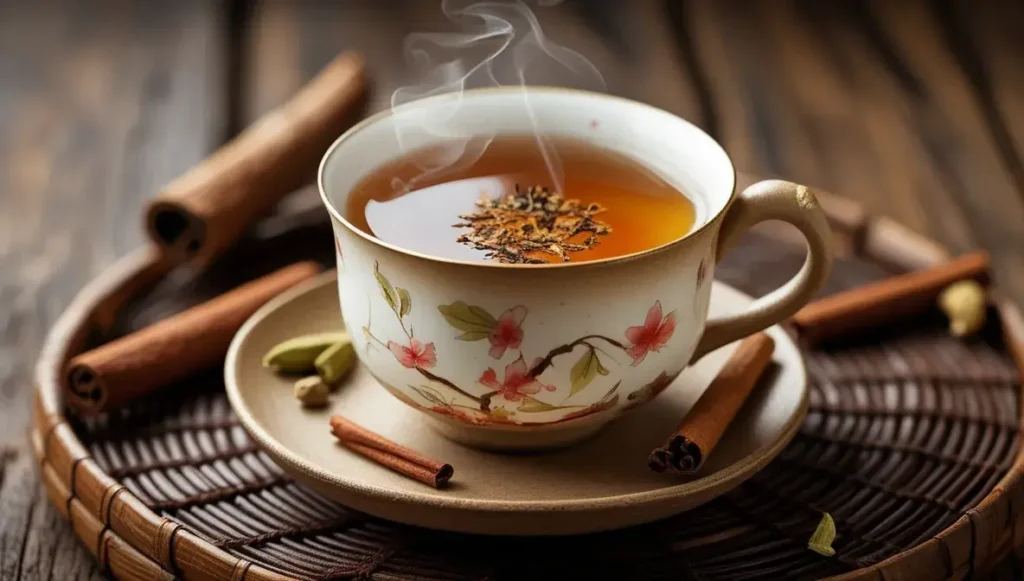
I’m really into this blend! Spiced Chai Pu Erh is a cool mix of aged pu erh tea benefits and the warm, comforting spices you’d find in chai. The earthy taste of the pu erh is a great base for the cinnamon, cardamom, ginger, and cloves that are usually in chai. It’s a rich, full-bodied tea with a spicy kick that warms you up.
It’s like getting the best of both worlds – the digestive benefits of pu erh and the cozy flavors of chai. I think it’s perfect for a chilly day or as a treat after dinner. I like to add a splash of milk to make it creamier and mellow out the spices. If you’ve got a sweet tooth, a little honey is also really good.
Spiced Chai Pu Erh is a great choice if you love chai and want to try something new with different types of pu erh. It’s also a good way to get into pu erh if you’re curious about flavored teas. I’ve been trying to figure out where to buy pu erh tea myself, and this one is definitely on my list to find again. I’ve been reading up on how to brew pu erh tea properly to make sure I get the most out of it. I’m also interested in the health benefits of pu erh tea, so this seems like a win-win.
I’ve been experimenting with different brewing times and temperatures to find what brings out the best flavor. It’s been a fun journey, and I’m excited to keep exploring the world of pu erh tea. I’m also looking into types of pu erh tea to see what other interesting blends are out there. I’ve heard good things about aged pu erh tea reviews, so I might check those out too.
Here’s a quick rundown of why I like it:
- Warming and spicy flavor
- Combines the best of pu erh and chai
- Easy to customize with milk and honey
- Good introduction to flavored pu erh
6) Lemongrass Mint Pu Erh
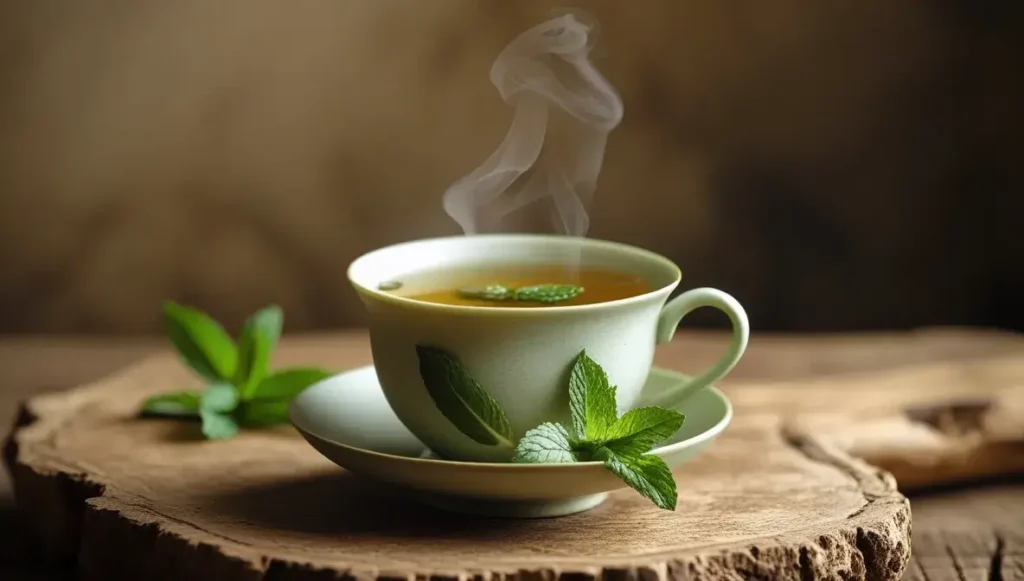
This tea is a really interesting mix! It takes the earthy taste of pu erh and combines it with the refreshing flavors of lemongrass and mint. The lemongrass gives it a nice citrusy kick, which is pretty cool.
Mint adds a crisp, clean taste that balances out the pu erh. It’s a good way to get into pu erh if you’re not used to the strong, fermented taste. I think it’s a great afternoon drink. The pu erh gives you a little energy, and the mint is really refreshing. Plus, it’s awesome iced on a hot day. The cool mint and citrus flavors really shine when it’s cold.
I’ve found that this tea is especially nice after lunch. The mint seems to help with digestion, which is always a plus. I usually steep it for about 3-5 minutes in hot water, but you can adjust it to make it stronger if you like.
👉 Experience Exclusive Pu Erh Tea Richness You Deserve 👈
7) Bergamot Lavender Pu Erh
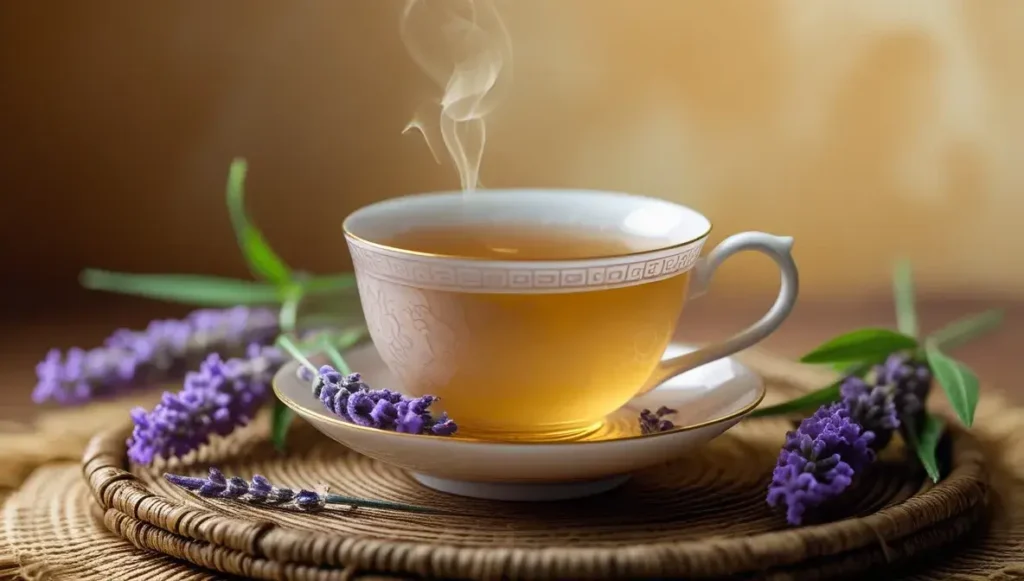
This tea is a really interesting mix. It takes the earthy taste of pu erh and adds the citrusy zing of bergamot, plus the calming scent of lavender. It’s like Earl Grey, but with a deeper, more complex flavor. The lavender makes it softer and more relaxing. I think it’s best in the afternoon or evening when you want to chill out after a long day. The caffeine from the pu erh and the lavender’s calming effect is a cool combo.
When you make this tea, don’t use boiling water. Let it cool a bit first. Steep it for about 3-4 minutes. That way, you get all the flavors without it being too strong. The smell is amazing. You’ll notice the bergamot first, then the lavender, and then the earthy pu erh.
Conclusion: What Is the Best Pu Erh Tea to Try Today?
So, there you have it! We’ve gone through some really great Pu Erh teas. Each one brings something different to the table, whether you like a classic earthy taste or something with a fun twist. Trying these teas is a good way to see what Pu Erh is all about. It’s a big world of flavors, and finding your favorite is part of the fun. So go ahead, pick one, brew it up, and enjoy the experience. You might just find your new go-to drink.
Frequently Asked Questions
What exactly is Pu Erh tea?
Pu Erh tea is a special kind of fermented tea from China. It’s known for its rich, earthy taste and can be aged for many years, which often makes its flavor even better.
Are there different kinds of Pu Erh tea?
You can find Pu Erh tea in two main types: raw (sheng) and ripe (shou). Raw Pu Erh changes over time as it ages, while ripe Pu Erh is fermented quickly to give it an aged flavor right away.
What are the good things about drinking Pu Erh tea?
Pu Erh tea is often praised for helping with digestion, lowering bad cholesterol, and having lots of antioxidants. Some people also drink it for an energy boost.
How do I make Pu Erh tea?
To make Pu Erh tea, use water that’s just below boiling (around 200°F or 93°C). Steep it for about 30 seconds to a minute for the first brew, and then you can steep it multiple times, making each steep a little longer.
Does Pu Erh tea have caffeine?
Yes, Pu Erh tea does have caffeine. The amount can change based on the type of tea and how it’s made, but it generally has less caffeine than coffee.
How should I store my Pu Erh tea?
Pu Erh tea is best kept in a cool, dry place away from strong smells. It’s often stored in special containers that let it breathe and continue to age properly.
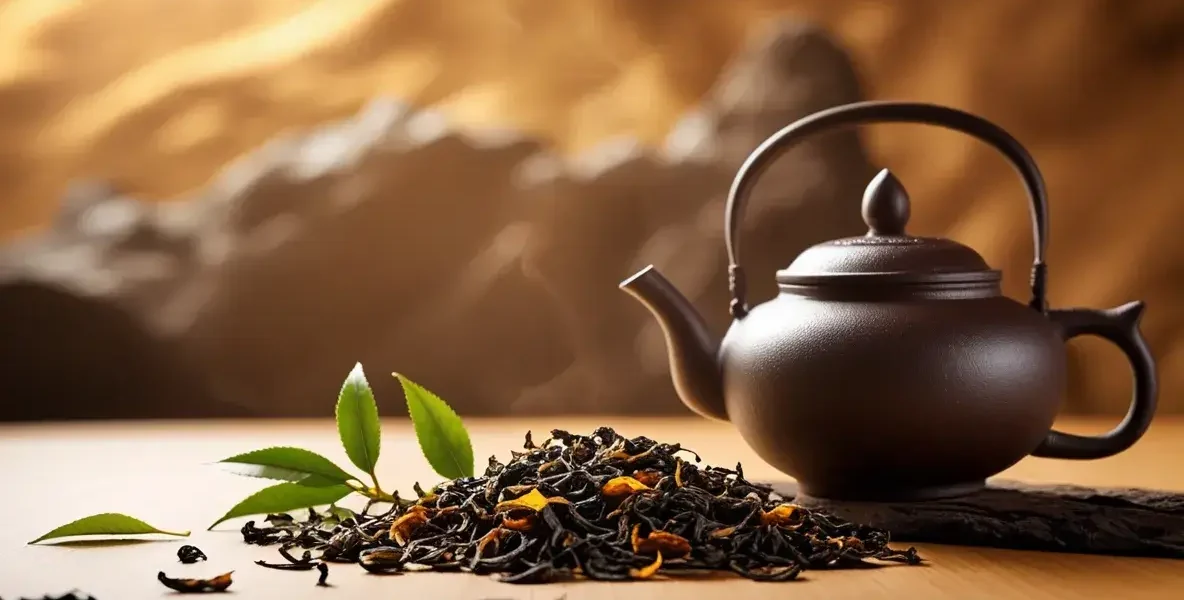






![Jasmine Tea vs Green Tea Benefits: Which Gives Better Health Results? [2025] jasmine tea vs green tea benefits](https://www.goteaworld.com/wp-content/uploads/2025/09/jasmine-tea-vs-green-tea-benefits-150x150.webp)





